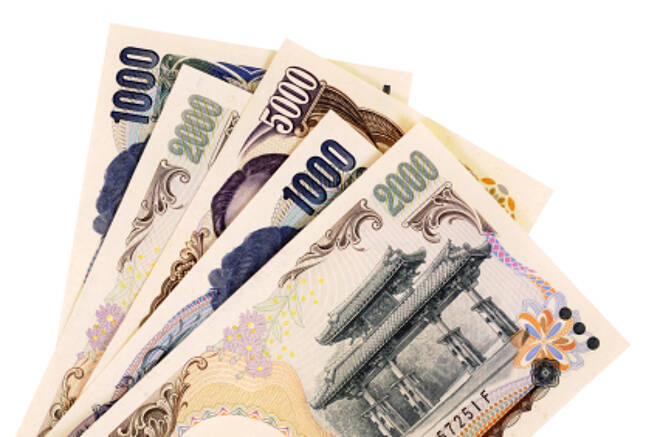Advertisement
Advertisement
USD/JPY Fundamental Weekly Forecast – Abe’s Ruling Coalition On Track for Big Win in Sunday’s Election
By:
The Dollar/Yen rose sharply last week, driven mostly by a widening of the spread between U.S. Government Bonds and Japanese Government Bonds. The
The Dollar/Yen rose sharply last week, driven mostly by a widening of the spread between U.S. Government Bonds and Japanese Government Bonds. The increasing interest rate differential helped make the U.S. Dollar a more attractive investment.
The USD/JPY settled at 113.495, up 1.667 or 1.49%.
There weren’t any major economic reports from Japan last week, but traders did get a chance to respond to a speech from Haruhiko Kuroda, head of the Bank of Japan.
Kuroda said that his country’s economy was expanding moderately and that heightened global political risks so far haven’t destabilized financial markets. He did not say what risks he was referring to, but investors have been focusing on the standoff with North Korea over its increased missile tests and development of nuclear weapons.
Last week’s price action by the U.S. Dollar was primarily dominated by Fed member comments and political events.
The week started with Fed Chair Janet Yellen saying on October that the American economy was in good health in an upbeat assessment that reinforced expectations the Fed is planning to raise its benchmark interest rate later this year.
On October 20, Yellen said that the lack of inflation has been an explainable “surprise,” while the Fed’s removal of stimulus is “working well.”
On October 17, Federal Reserve Bank of Philadelphia President Patrick Harker said he thinks one more increase in interest rates is appropriate this year but cautioned his forecast could change if inflation doesn’t pick up.
In other news, the Empire State Manufacturing Index beat expectations with a reading of 30.2 and the Philadelphia Fed Manufacturing Index bested its estimate with a reading of 27.9.
Weekly Unemployment Claims hit a 44-year low. The Fed Beige Book showed growth in all regions. Housing data was mixed with Building Permits and Housing Starts coming in below expectations and Existing Home Sale exceeding the estimate.
Politically, the Senate passed the budget which paved the way toward tax reform. This helped drive up U.S. Treasurys, demand for higher risk assets and the U.S. Dollar. It was also reported that President Trump was considering three candidates for Fed Chair, one of them, current Chair Yellen. He is expected to make his decision the first week of November.
Forecast
Early in the week, the focus for Japanese Yen traders will be on Sunday’s election. However, the direction of the USD/JPY will be primarily determined by the direction of U.S. Treasury yields and appetite for risky assets.
According to media exit polls, Japanese Prime Minister Shinzo Abe’s ruling coalition was on track for a big win in Sunday’s election, potentially re-energizing a push towards his cherished goal of revising the post-war, pacifist constitution.
An Abe victory means his “Abenomics” growth strategy centered on the hyper-easy monetary policy will likely continue.
Traders will also have the opportunity to react to a number of U.S. economic reports including Durable Goods, Weekly Unemployment Claims and Advance GDP.
Another factor that could influence the direction of the USD/JPY is President Trump’s appointment of the next Fed Chair. If he picks a hawkish candidate then USD/JPY should rally since this news will be bullish for the U.S. Dollar. If he moves on a dovish selection then we could a profit-taking break in the USD/JPY.
Additionally, on October 26, the European Central Bank meets to decide monetary policy. Its decision could trigger a volatile reaction in the Forex markets that could have a short-term influence on the USD/JPY.
Despite the news events, the main focus will be on the direction of U.S. Treasury yields since this will influence the spread between U.S. Government Bonds and Japanese Government Bonds. The wider the spread the more bullish the U.S. Dollar.
About the Author
James Hyerczykauthor
James is a Florida-based technical analyst, market researcher, educator and trader with 35+ years of experience. He is an expert in the area of patterns, price and time analysis as it applies to futures, Forex, and stocks.
Did you find this article useful?
Latest news and analysis
Advertisement
